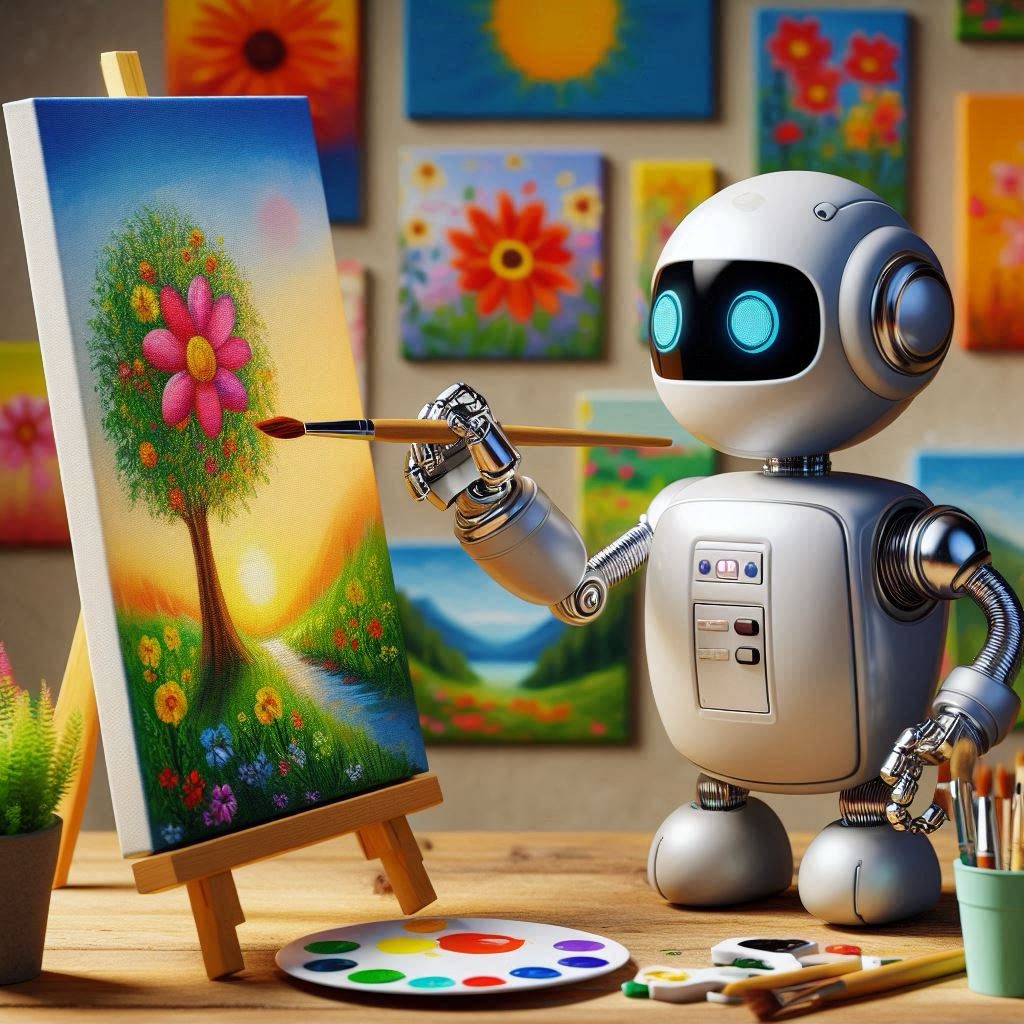I saw an article today about a new robot, AIDA that is painting and selling the paintings.

**Ai-Da** is the world’s first ultra-realistic humanoid robot artist, created by British artist Aidan Meller in 2019. Here are some key details:
1. **Capabilities**: Ai-Da can draw, paint, and create sculptures using cameras in her eyes, AI algorithms, and a robotic arm. She can also engage in performance art and poetry.
2. **Notable Achievements**: Ai-Da’s painting of British mathematician Alan Turing, titled **”AI God”**, was the first artwork by a humanoid robot to be sold at auction, fetching over $1 million.
3. **Exhibitions**: Ai-Da has been exhibited at prestigious venues such as the United Nations, the Design Museum in London, and the Venice Biennale.
4. **Purpose**: Ai-Da aims to spark conversations about the integration of technology in society and the evolving definition of art and creativity.
5. **Influence**: Ai-Da’s work challenges traditional notions of art and artists, exploring how machines and algorithms can influence human creativity.
How Ai-Da Works
Ai-Da uses a combination of AI algorithms, cameras, and robotic arms to create her art. Her process involves a few key components:
1. **Vision and Perception**: Ai-Da has cameras in her eyes that allow her to “see” the world around her. She captures images or looks directly at her subject, which is then processed by machine learning algorithms.
2. **AI Algorithms**: Once she captures an image, she uses a set of neural networks to analyze and interpret it. She processes visual information, transforms it into patterns or styles, and then decides how to recreate the image as a sketch, painting, or other visual art.
3. **Robotic Arm Movement**: Ai-Da is equipped with a robotic arm that can hold a brush or pen and execute her drawings or paintings. Her movements are carefully programmed to mimic the physical strokes and gestures of an artist.
4. **Generative AI for Style**: She can experiment with different styles, from abstract to realistic, and often incorporates influences from well-known art movements.
### Ai-Da’s Art and Impact
Ai-Da’s work has garnered attention from the art world and tech communities alike, as her creations raise questions about the nature of creativity, authorship, and the role of machines in human endeavors. Some of her pieces have been exhibited in galleries, and she has even held solo exhibitions. Critics and enthusiasts debate whether her art qualifies as “real” art, given that her creative process is entirely guided by algorithms and programming rather than human emotion.
### Cultural and Philosophical Questions
Ai-Da’s existence brings up questions about:
– **Creativity and Authenticity**: What qualifies as creativity if a machine can mimic artistic techniques and create original pieces?
– **The Role of AI in Human Expression**: As AI enters more creative fields, it challenges traditional notions of art as a uniquely human domain.
– **Intellectual Property and Authorship**: Since Ai-Da’s work is AI-generated, the authorship rights are complex, as her programming and output are designed by her human creators.
Overall, Ai-Da the robot is a fascinating experiment in art and technology, blurring the lines between machine and human creativity. Her work symbolizes the growing collaboration between humans and AI, offering both innovative artistic experiences and thought-provoking discussions on the future of art.